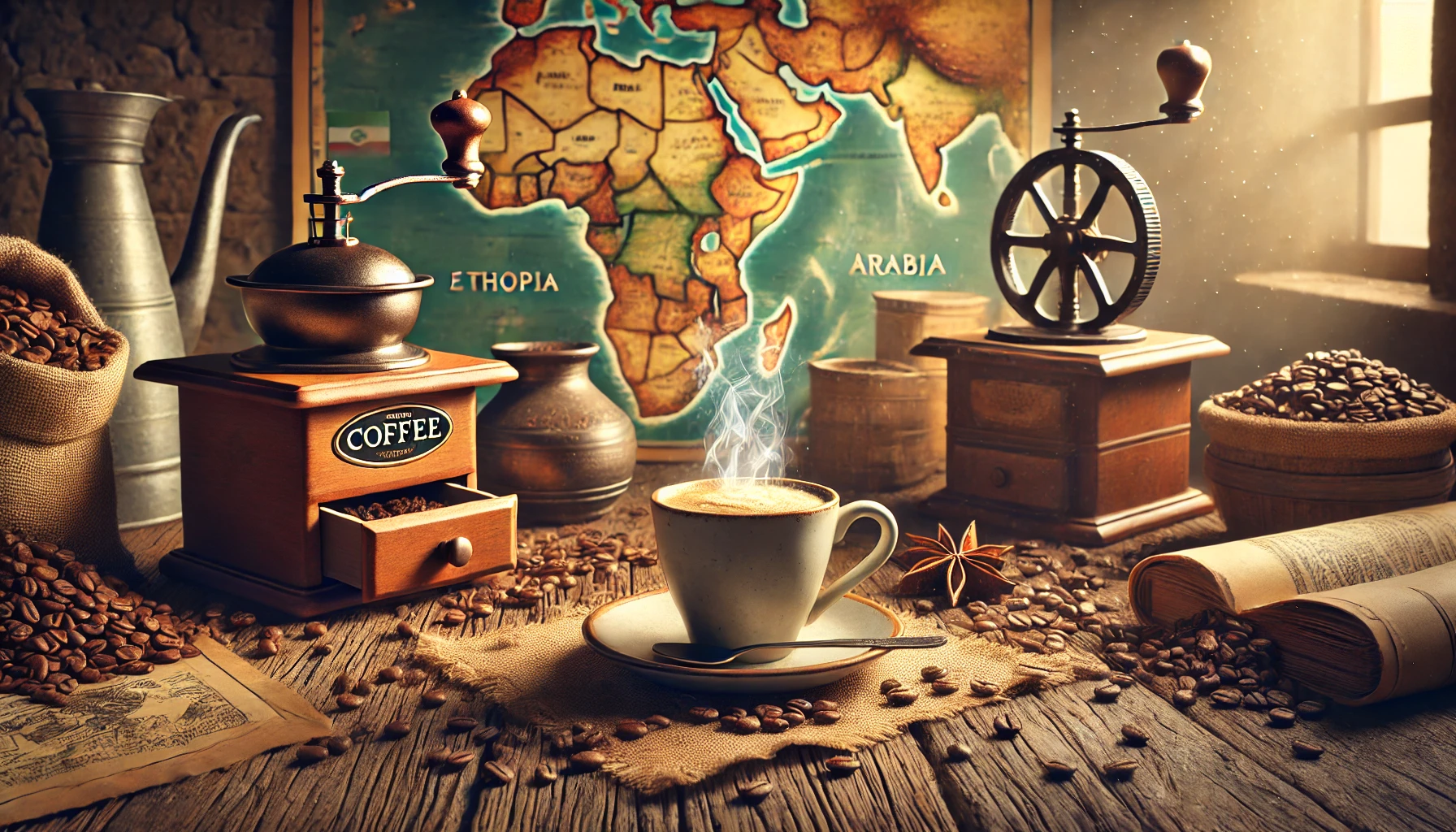Coffee is more than just a beverage. For millions of people around the world, it’s a daily ritual, a source of energy, a reason to socialize, and even a symbol of culture. But where did it all begin? Let’s explore the fascinating journey of coffee, from its ancient roots to its modern-day global fame.
The Legendary Origins of Coffee
The most popular legend about the origin of coffee dates back to 9th-century Ethiopia, where a young goat herder named Kaldi noticed that his goats became unusually energetic after eating berries from a certain shrub. Curious, Kaldi tried the berries himself and felt a surge of energy. He took the discovery to a local monastery, where the monks used the berries to stay awake during long hours of prayer.
Although the accuracy of this tale is debatable, it’s widely told in coffee folklore and gives us a charming image of coffee’s mystical beginnings.
From Ethiopia to the Arab World
While coffee likely originated in Ethiopia, its first organized cultivation and trade began in the Arab world, particularly in Yemen during the 15th century. Sufi monks in Yemen used coffee to stay awake during spiritual rituals, and the beverage quickly spread through the Arabian Peninsula.
Yemeni port cities like Mocha (yes, the same name as the coffee-chocolate combo!) became important trade hubs. The method of brewing and serving coffee also evolved, with the development of coffeehouses, or qahveh khaneh, in places like Mecca and Medina.
Coffeehouses: The Original Social Networks
By the 16th century, coffeehouses had become incredibly popular throughout Persia, Egypt, Syria, and Turkey. These places weren’t just for drinking coffee—they were cultural and social centers where people gathered to discuss politics, music, poetry, and religion.
Because of the lively debates they inspired, some rulers viewed coffeehouses as centers of rebellion and attempted to ban them. But the demand for coffee couldn’t be stopped.
Coffee’s Entry into Europe
Coffee arrived in Europe in the 17th century and was initially met with suspicion. Some religious leaders even called it the “bitter invention of Satan.” But once Pope Clement VIII tasted it and reportedly said, “This devil’s drink is so delicious… we should cheat the devil by baptizing it,” coffee’s popularity soared.
Soon, coffeehouses sprang up across cities like Venice, London, Paris, and Vienna. These establishments, often called “penny universities” in England, became gathering places for intellectuals, writers, and merchants.
The Birth of Coffee in the Americas
As coffee’s popularity continued to grow, European powers were eager to cultivate it in their colonies. The Dutch planted it in Java (Indonesia), the French in the Caribbean, the Spanish in Central America, and the Portuguese in Brazil.
By the 18th century, coffee had become a major global commodity, and countries like Brazil rose to dominate the coffee market—a status it still holds today.
Industrialization and Modernization of Coffee
The 19th and 20th centuries brought massive changes to how coffee was produced and consumed. Here are some milestones:
- 1864: Jabez Burns invented the first coffee roaster that didn’t burn the beans, helping mass production.
- 1901: The first instant coffee was created by Japanese-American chemist Satori Kato.
- 1938: Nestlé launched Nescafé, a revolutionary instant coffee product.
- 1971: The first Starbucks opened in Seattle, beginning a coffee culture revolution in the West.
The Rise of Specialty Coffee
In recent decades, coffee has entered its “third wave”—a movement that treats coffee as an artisanal product, similar to wine. Focus has shifted to:
- Single-origin beans
- Ethical sourcing and sustainability
- Manual brewing methods (like pour-over, Chemex, AeroPress)
- Latte art and barista skills
Consumers now care deeply about where their coffee comes from, how it’s roasted, and who grew it.
Coffee Around the World Today
Today, coffee is one of the most consumed beverages on Earth. Every culture has its own unique way of enjoying it:
- Italy is known for espresso and cappuccino.
- Sweden and Finland have the highest coffee consumption per capita.
- Vietnam offers sweetened condensed milk coffee (cà phê sữa đá).
- Ethiopia still conducts traditional coffee ceremonies.
- Brazil drinks cafézinho, a strong, sweet coffee served in small cups.
From a spiritual aid in ancient monasteries to a lifestyle essential in modern society, coffee has had a truly remarkable journey.
Final Thoughts: A Cup Full of Stories
Understanding the history of coffee adds a rich layer of appreciation every time we sip a cup. It’s not just about caffeine—it’s about culture, innovation, struggle, and connection. As coffee continues to evolve, one thing remains true: it brings people together, one cup at a time.
